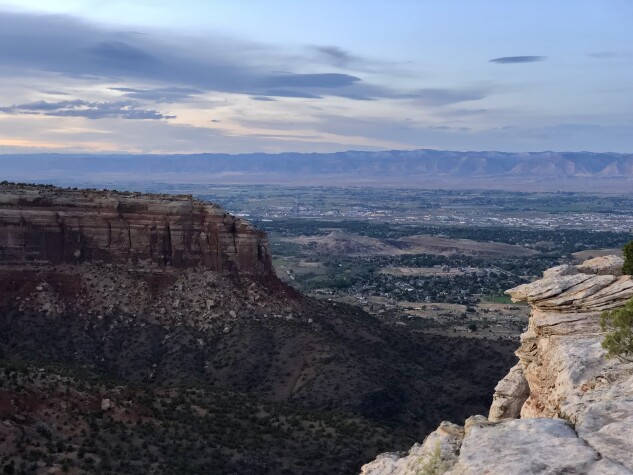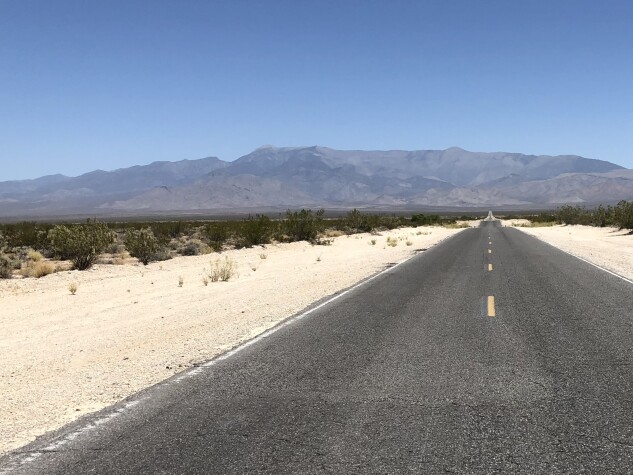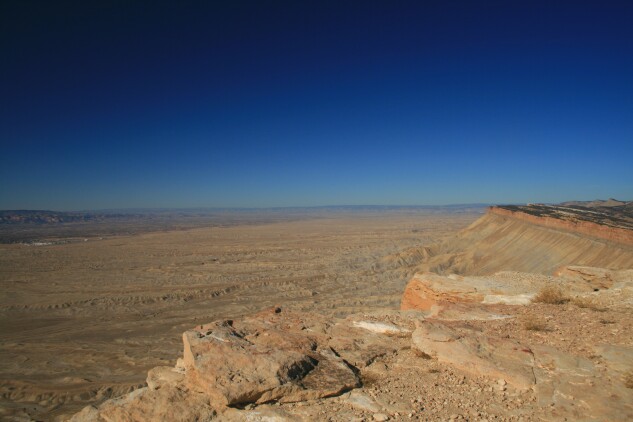- Enclaves could be exempt from environmental laws
- Public lands in Oregon, Idaho, Nevada, Colorado targeted
When
Two years later and two-plus months into Trump’s second presidency, supporters are discussing Freedom Cities on Capitol Hill and say the Interior Department’s recent push to privatize some public lands opens the window to make regulation-free federal enclaves a reality.
The end game is audacious: High-tech company towns free from state law and most federal rules—including the Internal Revenue Code, major environmental laws like the Clean Water Act and the Endangered Species Act; worker protections like the Fair Labor Standards Act and the Occupational Health and Safety Act; and the Affordable Care Act.
On March 17, Interior Secretary
Three days later, the American Enterprise Institute’s Housing Center proposed “Homesteading 2.0,” which calls for the federal government to privatize 850 square miles of federal land in two steps: First for 3 million new homes to be built by 2035, and then later this century for the creation of 20 new Freedom Cities scattered around the West where millions more could live.
“AEI wading into this lends to the credibility of the American Enterprise Institute, which a lot of Republican lawmakers and leaders on the conservative side take seriously,” said Michael Carroll, BLM campaign director at The Wilderness Society. “This is a real threat to federal public lands.”
The push appears aimed at creating government-endorsed city-sized libertarian tech hubs, said Max Woodworth, an associate geography professor at Ohio State University’s Center for International Security Studies.
“The point of Freedom Cities is precisely to cut through the dense thicket of social and political barriers that existing cities present to developers, for good and ill, and spark a boom in strategic tech industries while expanding new housing,” he said.
Environmental groups will oppose any such efforts, said Randi Spivak, public lands director for the Center for Biological Diversity. “Public opinion is vastly against it. The last thing they want to see is a wholesale sell-off.”
But draft legislation seen by Bloomberg Law lays out what backers see as the legal justification for Congress to empower the federal government to create Freedom Cities.
‘Experiments in Governance’
Supporters, whose ideas vary, see public land as a mostly untapped resource to house the masses and experiment in new ways of governance without the limits of environmental and labor laws. Freedom Cities could be modeled after Russian Czar Peter the Great’s creation of St. Petersburg, supporters wrote in December, allowing innovation to flourish and housing to be built with little constraint.
A lot is unknown about how Freedom Cities would work. Tom W. Bell, a Chapman University law professor focusing on special jurisdictions, is working with the Frontier Foundation to create a legal basis.
They would be “small safely-contained experiments in governance” to “help us discover better ways to live together,” Bell said. “Freedom is better than gold. When you turn people loose to create and give them incentives to satisfy market demand—wow—that’s what we want to tap.”
In his vision, Freedom Cities would be governed by the secretaries of Commerce, Treasury, and Interior, and they would be completely exempt from nearly all federal environmental, healthcare, and labor laws, and the tax code.
Bell said the Constitution’s property clause, which allows the federal government to set all the rules on land it owns, enables Congress to create a trust arrangement for split title to the land. The government would still own the land and set the rules, but companies and individuals could still get title to it, he said.
Paid by the government to maintain infrastructure around Freedom Cities, states would be nearly as powerless over them as they are over a military base, where state regulations generally don’t apply, Bell said.
If pollution from a Freedom City spills over to the surrounding area, those in harm’s way would have grounds to complain, Bell said.
Andrew Mergen, an environmental law professor at Harvard Law School, said Congress has broad powers to use federal lands as it sees fit, including carving out exemptions from environmental laws.
“They have often exempted certain projects from environmental statutes,” Mergen said. “This would be at a whole other scale, but within their authority.”
Brewing Opposition
Public lands advocates fear Freedom Cities would tap into long-simmering anti-government sentiment in the West, which seeks to push the federal government away from keeping public lands in public hands as Congress decreed when it ended homesteading in 1976.
That was a driving force behind Utah’s unsuccessful 2024 petition to the US Supreme Court to declare federal land holdings within the state unconstitutional—an argument that Alaska, Wyoming, and Idaho also supported.
The push for privatization focuses on the roughly 220 million acres of America’s federal lands managed by the BLM that are not already protected as national monuments, conservation areas, and wilderness areas.
Burgum in March called those lands minerals-rich “assets” worth trillions that could be tapped to pay down the national debt.
“The country has rallied around the policy of protecting federal lands for the public, and this administration is trying to change course,” said Chris Winter, executive director of the Getches-Wilkinson Center for Natural Resources at the University of Colorado Law School.
“A lot of folks are feeling right now that public lands are at a greater risk than they have been in generations,” said Winter.
‘I Think It Could Work’
Deschutes County, Ore., flanked on the west by the lush Cascades and the arid sagebrush steppe on the east, is an area AEI and the Freedom Foundation identified as ideal for a Freedom City. Bend, the county seat, and its neighbor Redmond are growing fast. Housing is expensive, a popular ski resort is nearby, and they’re surrounded on nearly all sides by federal land.
“We definitely have the land” for Freedom Cities, Deschutes County Commissioner Patti Adair said. “I think it could work,” but it could also conflict with imperiled greater sage-grouse protections and other uses.
The main challenges to developing new housing in the region are a lack of municipal infrastructure, the costs of building the infrastructure, the high cost of construction materials, and labor scarcity—not land availability, said Phil Chang, another Deschutes County Commissioner.
The abundant federal land is the reason many people moved to Bend and Redmond in the first place, Chang said.
“Making more land available doesn’t make housing more affordable all by itself because housing prices here have become disconnected from local salaries and wages,” Chang said.
Housing First
Transferring federal land for private development isn’t new. The BLM can exchange or sell small parcels of land administratively, but large transfers require an act of Congress. That’s what happened when Congress passed a law in 1998 allowing some BLM parcels scattered across the Las Vegas area to be sold off in small parcels to be used for housing.
AEI’s two-step approach focuses first on new homes, as did Trump in his 2023 video announcing his support for the idea.
“You get support for these approaches by having both of them,” said Edward Pinto, co-director of the AEI Housing Center. Interior’s housing plan “opens the window” to broader public and political support for a new era of homesteading. Small builders benefit in the short term while “large, well-capitalized development companies” gain interest in the long-term plan for new cities, he said.
An average of 50,000 acres of federal land would be needed for each Freedom City, according to a Frontier Foundation policy memo. The foundation is working with AEI and the Charter Cities Institute to promote the idea in the US.
The White House didn’t respond to a request for comment. Jon Raby, the BLM’s acting director, said in an interview that the bureau hasn’t seen any specific proposal on Freedom Cities, and it’s focused on meeting existing cities’ immediate housing needs.
New Age Company Towns
The city of Grand Junction, Colo., along the Colorado River, is flanked by a national monument and BLM land to the horizon in nearly every direction, making it a prime area for developers looking to build Freedom Cities.
AEI and the Frontier Foundation pegged some public land beneath the towering sand-tinted Book Cliffs on the northern flank of Grand Junction as a perfect site for a Freedom City. Public lands there are treeless and undeveloped, often used for off-highway-vehicle trails and little else. But it’s close to a freeway and an existing airport.
Places like the Grand Junction area, the desert surrounding Las Vegas, the Treasure Valley surrounding Boise, Idaho, and the sagebrush steppe in Deschutes County, Ore., home to the cities of Bend and Redmond, are ideal to build new Freedom Cities that would be key to reindustrializing the US, supporters say.
Each one would focus on a specific kind of technological development, said entrepreneur Nick Allen, a founder of the Frontier Foundation.
Similar to company towns for new tech, one new city would focus on semiconductors, and others would be built on the defense, drones, advanced materials, biotech, and nuclear energy industries, he said.
“You want to build communities around this,” Allen said. “You parallel industry to a city, like automaking in Detroit, glassmaking in Toledo, Ohio.”
To contact the reporter on this story:
To contact the editors responsible for this story:
Learn more about Bloomberg Law or Log In to keep reading:
See Breaking News in Context
Bloomberg Law provides trusted coverage of current events enhanced with legal analysis.
Already a subscriber?
Log in to keep reading or access research tools and resources.



